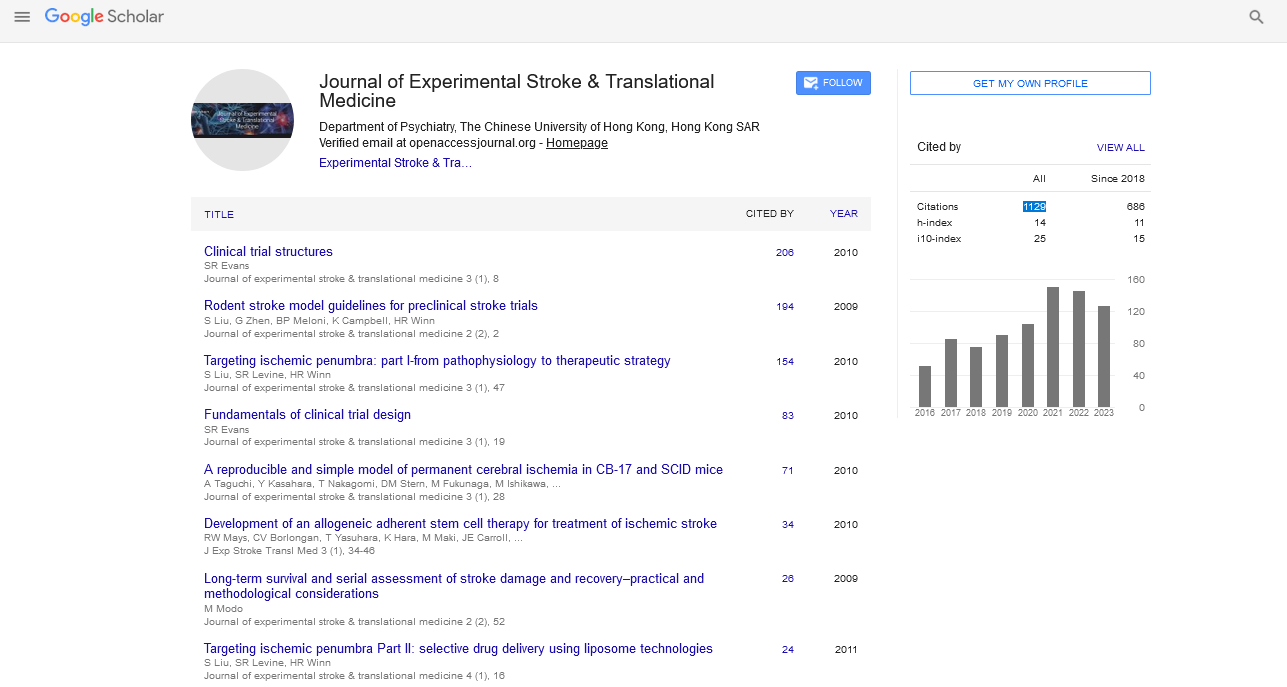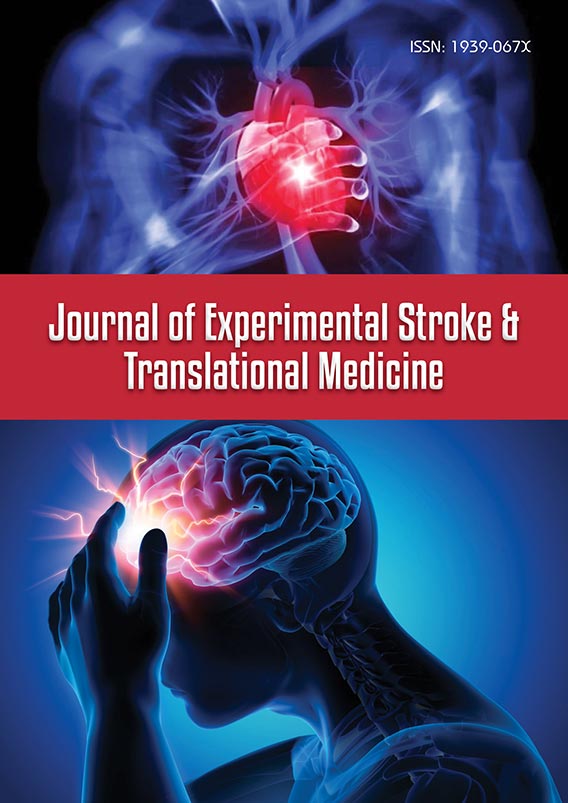Perspective - Journal of Experimental Stroke & Translational Medicine (2025) Volume 17, Issue 1
The Silent Surge: High Blood Pressure and the Complex Tapestry of Stroke Causes
Yin Gao*
Department of Cardiology, University of Copenhagen, Copenhagen, Denmark
- *Corresponding Author:
- Yin Gao
Department of Cardiology, University of Copenhagen, Copenhagen, Denmark
E-mail: xajb@126.com
Received: 27-Nov-2024, Manuscript No. JESTM-23-121193; Editor assigned: 29-Nov-2024, PreQC No. JESTM-23-121193 (PQ); Reviewed: 13-Dec-2024, QC No. JESTM-23-121193; Revised: 14-Feb-2025, Manuscript No. JESTM-23-121193 (R); Published: 21-Feb-2025, DOI: 10.37532/ JESTM.2025.17(1).303-304
Introduction
Stroke, often referred to as a “brain attack,” is a multifaceted medical event with a myriad of contributing factors. Among these, high blood pressure, or hypertension, emerges as a significant and modifiable risk factor. This article delves into the intricate tapestry of stroke causes, shining a spotlight on the pervasive influence of high blood pressure and its role in shaping the landscape of this critical neurological condition.
Description
Understanding stroke causes: A complex web
A stroke occurs when there is a disruption in blood flow to the brain, leading to damage or death of brain cells. Two primary types of strokes, ischemic and hemorrhagic, result from distinct mechanisms, and their causes are diverse and interconnected.
Ischemic strokes: A vast spectrum of contributors
Ischemic strokes, caused by a blockage or clot that obstructs blood flow to the brain, constitute the majority of stroke cases. Within this category, atherosclerosis, or the buildup of fatty deposits in arteries, plays a pivotal role. Hypertension, however, stands out as a leading contributor, influencing the formation of atherosclerotic plaques that can rupture and trigger clot formation.
Hypertension: A silent culprit
High blood pressure, often referred to as the “silent killer,” is a pervasive and insidious contributor to stroke risk. The force of blood against the arterial walls, when consistently elevated, can weaken the vessels over time. This weakening makes the arteries more susceptible to the formation of clots or the rupture of atherosclerotic plaques, increasing the likelihood of ischemic strokes.
Atherosclerosis: The buildup of trouble
Atherosclerosis, characterized by the accumulation of cholesterol, fat, and other substances on the artery walls, is a key player in the development of ischemic strokes. Hypertension accelerates this process, fostering the creation of plaques that can obstruct blood flow or break loose, causing embolic strokes. Managing hypertension is essential not only for overall cardiovascular health but also as a preventive strategy against atheroscleroticdriven strokes.
Hemorrhagic strokes: The rupture within
Hemorrhagic strokes result from the rupture of a blood vessel, leading to bleeding within or around the brain. While hypertension remains a significant contributor to the weakening of blood vessel walls, other factors, such as aneurysms and Arteriovenous Malformations (AVMs), can also predispose individuals to hemorrhagic strokes.
Hypertension’s role in hemorrhagic strokes
Elevated blood pressure puts relentless pressure on the delicate walls of blood vessels, particularly the smaller arteries and arterioles. Over time, this chronic stress weakens the vessel walls, making them more prone to rupture. In the case of hemorrhagic strokes, hypertension serves as a major catalyst, contributing to the vessel rupture that leads to bleeding in the brain.
Aneurysms and AVMs: Beyond hypertension
While hypertension significantly influences the risk of hemorrhagic strokes, other structural abnormalities can also play a role. Aneurysms, which are weakened and ballooned areas in blood vessel walls, and Arteriovenous Malformations (AVMs), irregular connections between arteries and veins, can rupture independently of blood pressure levels. However, hypertension can exacerbate the stress on these structures, increasing the likelihood of rupture and hemorrhage.
Lifestyle factors and contributing conditions
Beyond hypertension, lifestyle factors and underlying health conditions contribute to the intricate web of stroke causes. Smoking, excessive alcohol consumption, poor diet, lack of physical activity, and obesity amplify the risk profile for strokes. Chronic conditions such as diabetes and cardiovascular diseases also intersect with hypertension, creating a complex interplay of factors that influence stroke risk.
Preventing stroke: The power of hypertension management
The significance of managing hypertension as a preventive measure against strokes cannot be overstated. Lifestyle modifications, including a heart-healthy diet, regular exercise, smoking cessation, and limiting alcohol intake, contribute to blood pressure control. Medications, when necessary, play a crucial role in maintaining optimal blood pressure levels and reducing the risk of both ischemic and hemorrhagic strokes.
The silent progression: Stroke risk over time
The insidious nature of hypertension lies in its often asymptomatic progression. Individuals may live with elevated blood pressure for years, unaware of the damage occurring within their blood vessels. Regular blood pressure monitoring, particularly in high-risk populations, is a crucial aspect of stroke prevention, enabling early detection and intervention.
Conclusion
High blood pressure, as a silent and pervasive contributor to stroke risk, underscores the importance of proactive management and prevention strategies. Understanding the complex tapestry of stroke causes involves recognizing the intricate dance between hypertension, atherosclerosis, and various contributing factors. As the medical community continues to unravel the nuances of stroke etiology, the role of hypertension remains a focal point in bridging the gap to effective stroke prevention, offering the potential for better outcomes and a reduced global burden of this critical neurological condition.

